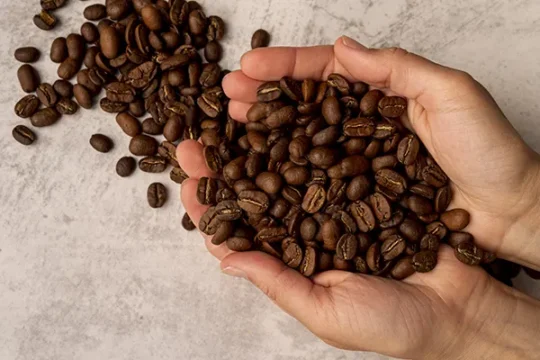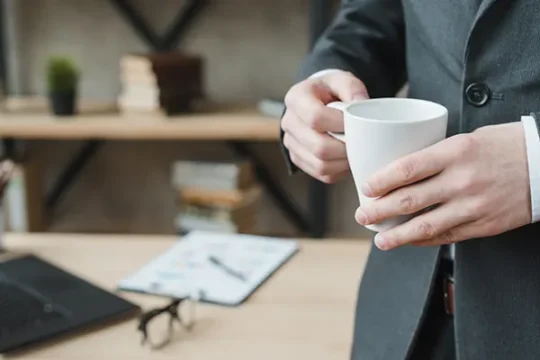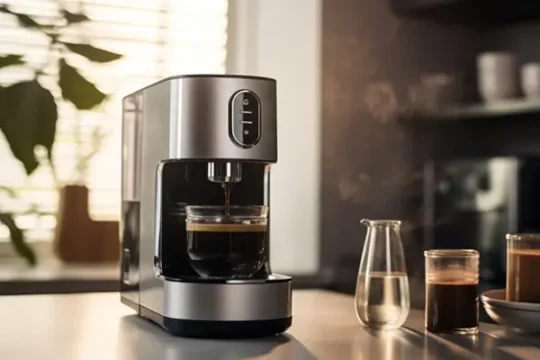TABLE OF CONTENTS
Coffee shops throw around Italian terms like everyone grew up in a Roman café. Ristretto, lungo, macchiato, cortado—the list goes on. But understanding what ristretto vs espresso vs lungo actually means makes ordering coffee less stressful. More importantly, it helps people get the coffee they actually want.
All three drinks share the same foundation: ground coffee, hot water, pressure. But depending on water volume and extraction time, these become completely different beverages. It’s like the difference between rare and well-done steak—same ingredients, same heat source, totally different results.
This guide breaks down each style so next time anyone orders coffee, they can do it with confidence instead of just pointing at the menu.
What is Espresso? The Classic Coffee Standard
Espresso is the baseline. Everything else is a variation on this foundation. It’s what most people picture when thinking of “strong coffee,” and there’s good reason it’s remained popular for over a century.
A regular espresso shot uses around 7-9 grams of finely ground coffee. Machines push hot water through it for about 25-30 seconds, producing roughly one ounce of concentrated coffee. Nothing fancy—just the standard most cafés worldwide have agreed upon.
The Perfect Espresso Extraction Process
Getting espresso right requires precision. Water needs proper temperature—around 195-205°F—but not boiling. Too hot burns the coffee. Not hot enough produces weak, under-extracted results.
Then there’s pressure. Espresso machines push water through at approximately 9 bars of pressure, which forces compounds from grounds quickly and efficiently.
Proper extraction shows itself through crema—that golden foam layer sitting on fresh espresso shots. Some people remove it, but crema contains significant aromatic compounds that enhance the drinking experience.
Grind size matters critically. Too fine and shots take forever, producing burnt, bitter flavors. Too coarse and water rushes through in seconds, leaving sour, weak coffee. Most skilled baristas spend months perfecting that balance, which explains quality espresso pricing.
Espresso Flavor Profile and Characteristics
Espresso flavor depends heavily on bean origin, but generally aims for balance. Some sweetness, moderate acidity, touch of bitterness—nothing overpowering everything else.
Ethiopian espresso often shows blueberry and lemon notes. Brazilian beans deliver chocolate and caramel. Colombian varieties tend toward nutty smoothness. Bean quality and freshness matter more than equipment sophistication. Even expensive machines can’t fix stale supermarket beans.
Texture-wise, espresso feels thicker than regular coffee. Not syrupy exactly, but definitely heavier. It coats the mouth differently than drip coffee, creating that substantial feeling despite consuming just one ounce.
Why Espresso Remains the Most Popular Choice
Espresso endures because of versatility. Drink it straight, add milk for lattes, add water for americanos. It’s the foundation drink that adapts to everything.
Strength balances perfectly—enough to provide alertness without overwhelming intensity. Espresso delivers reliable results whether consumed quickly at the counter or savored slowly with milk over thirty minutes. That consistency keeps it relevant. Every other coffee drink essentially modifies espresso by adding or removing elements.
Understanding Ristretto: The Intense Short Shot
Ristretto means “restricted,” which describes the process perfectly. Extraction stops deliberately short. Same coffee amount, but only half the water, stopping around 15-20 seconds instead of the full 25-30.
Why stop early? Coffee doesn’t extract evenly. Desirable compounds—sweet, fruity, aromatic elements—extract first. Bitter, harsh compounds appear later. Ristretto stops before unpleasant flavors emerge.
The result is a tiny, intensely concentrated shot. It’s surprisingly sweet without any added sugar. Texture becomes thick, almost syrupy, and flavors amplify dramatically. Whatever characteristics the beans normally show, ristretto makes them louder.
Interestingly, ristretto appears stronger and tastes more intense but actually contains less caffeine than regular espresso. Less water extracts fewer compounds from grounds. For maximum flavor in minimum volume, ristretto excels. For caffeine content, it’s not the best choice.
Many specialty shops now use ristretto shots in lattes and flat whites. The concentrated sweetness cuts through milk without getting lost, avoiding the burnt bitterness that sometimes happens with regular espresso.
Exploring Lungo: The Long, Smooth Extract
Lungo goes the opposite direction. It means “long,” and extraction continues longer—about 2 ounces of water over 45-60 seconds, which doubles both water and time.
While desirable compounds extract first, lungo keeps going afterward. It extracts everything coffee has, including bitter compounds most people avoid. Some consider this ruins coffee. Others genuinely prefer it. Coffee enthusiasts debate this endlessly.
Lungo tastes milder and more diluted than espresso, which seems counterintuitive given longer extraction. But extra water spreads everything out. Body becomes thinner, almost tea-like. More bitter notes emerge, more earthy flavors, less syrupy richness. Crema practically disappears because water volume dilutes oils.
Is lungo bad? Not necessarily. For those finding regular espresso too intense or wanting something to sip rather than shoot, lungo works well. It provides more volume without simply adding hot water afterward, which feels more authentic even if results seem similar.
Important note: lungo contains the most caffeine of the three. More extraction time equals more caffeine pulled from grounds. For maximum alertness without concern about bitterness, lungo delivers.
Key Differences Between Ristretto vs Espresso vs Lungo
Breaking down ristretto vs espresso vs lungo in practical terms for ordering:
Water and timing determine everything. Ristretto uses half an ounce in 15-20 seconds. Espresso uses one ounce in 25-30 seconds. Lungo uses two ounces in 45-60 seconds. These specific parameters completely change extraction chemistry.
Flavor profiles vary dramatically. Ristretto delivers sweet, concentrated, smooth characteristics with minimal bitterness—intense but pleasant. Espresso balances everything—sweet, sour, and bitter elements harmonizing. Lungo tastes milder overall but more bitter, with earthy notes polarizing preferences.
The confusing part: ristretto tastes strongest but contains least caffeine. Less water extracts less caffeine. Espresso sits in the middle. Lungo tastes weakest but contains most caffeine because extended extraction pulls more from beans. When ordering based on caffeine needs, consider extraction time rather than flavor intensity.
Crema reveals extraction quality too. Espresso produces abundant, stable, thick crema. Ristretto creates darker, thicker crema but less volume. Lungo barely produces any, and what forms disappears quickly as water dilutes oils.
Same coffee, same equipment, wildly different drinks. That’s the fundamental principle.
Which Coffee Shot Should You Choose?
The right choice depends on specific preferences and needs.
Choose ristretto for intense but smooth coffee. It’s unexpectedly sweet for such strength, with barely any bitterness. Perfect for those finding espresso sometimes tastes burnt or harsh. Also excellent in milk drinks—ristretto flat whites differ dramatically from regular espresso versions. For tasting subtle flavors in specialty single-origin beans, ristretto excels.
Stick with espresso for standard, reliable experience. It’s balanced, versatile, drinkable straight or with milk. Most coffee orders involve some espresso variation because it consistently works. For those still exploring preferences, espresso provides the safest starting point and satisfies most situations.
Select lungo if espresso feels too intense or more volume is desired. Some genuinely prefer that milder, slightly bitter taste. Lungo also provides maximum caffeine, which matters when needing serious alertness. It occupies middle ground between espresso intensity and drip coffee mildness.
The beauty of understanding these differences? Nobody needs to pick one forever. Preferences change based on situations. Quick shot before meetings? Ristretto delivers fast intensity. Relaxed mornings? Espresso provides enjoyable sipping. Extra caffeine after poor sleep? Lungo provides needed boost. Once familiar with each style’s characteristics, matching them to daily needs becomes natural.
Ready to Elevate Your Office Coffee Experience?
Understanding ristretto vs espresso vs lungo reveals what quality coffee equipment can deliver. If your team’s relying on outdated drip machines producing mediocre results, upgrading makes significant difference.
Whether employees want intense ristretto shots powering through morning meetings, classic espresso for afternoon energy, or smooth lungo for casual sipping, having proper equipment matters. Professional espresso machines pulling all three shot types transform office coffee culture compared to basic pod systems producing espresso-adjacent approximations.
Wake Up Coffee specializes in setting up offices across Kitchener, Waterloo, Cambridge, and the Greater Toronto Area with professional office coffee services that deliver café-quality results. Professional machines, freshly roasted beans, and reliable service when equipment needs attention.
Quality office coffee isn’t just a perk—it’s the difference between employees staying productive in-house versus making multiple café runs daily. Contact us today to discuss transforming your workplace coffee situation with equipment that actually delivers the coffee experience your team deserves.





